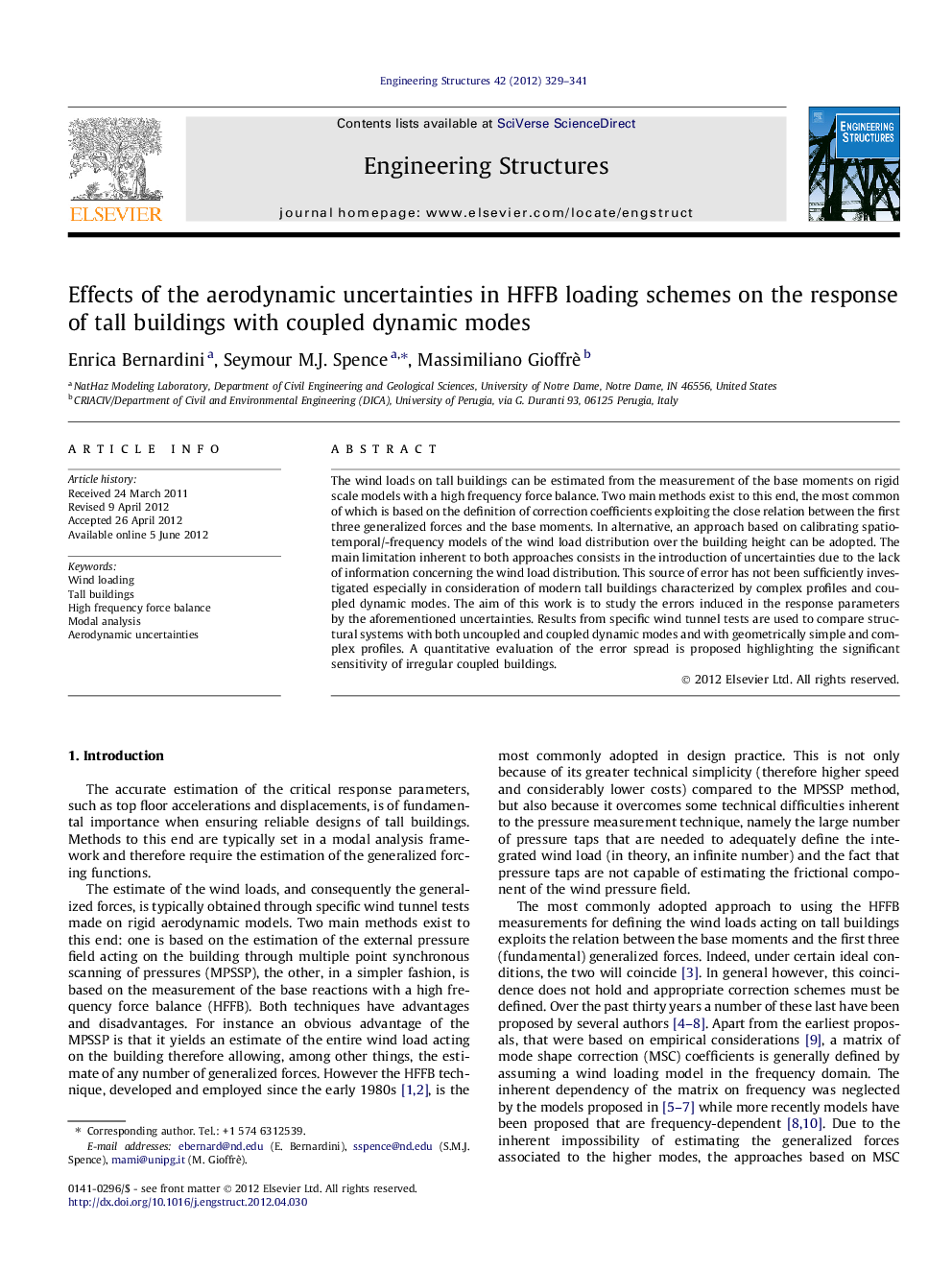| Article ID | Journal | Published Year | Pages | File Type |
|---|---|---|---|---|
| 267463 | Engineering Structures | 2012 | 13 Pages |
The wind loads on tall buildings can be estimated from the measurement of the base moments on rigid scale models with a high frequency force balance. Two main methods exist to this end, the most common of which is based on the definition of correction coefficients exploiting the close relation between the first three generalized forces and the base moments. In alternative, an approach based on calibrating spatio-temporal/-frequency models of the wind load distribution over the building height can be adopted. The main limitation inherent to both approaches consists in the introduction of uncertainties due to the lack of information concerning the wind load distribution. This source of error has not been sufficiently investigated especially in consideration of modern tall buildings characterized by complex profiles and coupled dynamic modes. The aim of this work is to study the errors induced in the response parameters by the aforementioned uncertainties. Results from specific wind tunnel tests are used to compare structural systems with both uncoupled and coupled dynamic modes and with geometrically simple and complex profiles. A quantitative evaluation of the error spread is proposed highlighting the significant sensitivity of irregular coupled buildings.
► HFFB-based responses and reference solutions are calculated for two tall buildings. ► The concept of aerodynamic uncertainties associated with the HFFB is introduced. ► The response errors associated with these uncertainties are quantified. ► Their importance for irregular, coupled tall buildings is demonstrated.
